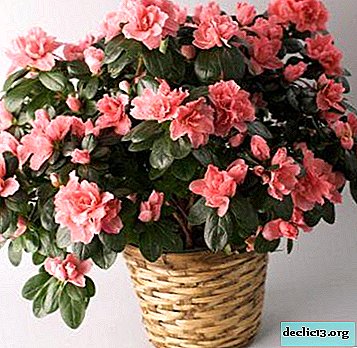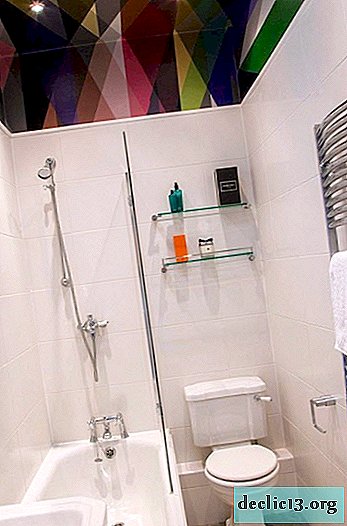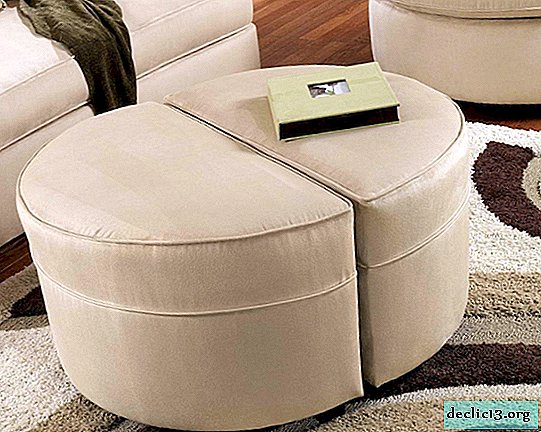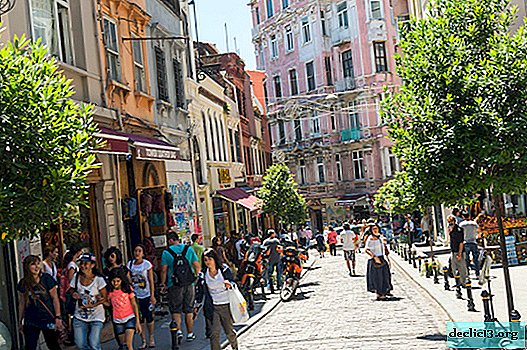Cold porcelain products
Cold porcelain is the cheapest, most malleable and affordable molding material. It’s completely safe to work with him, and it’s not at all necessary to have special skills and knowledge - even a small child can do such creativity. You do not need to look in stores for something special to create a unique jewelry or other little thing with your own hands. You can cook cold porcelain at home.



In appearance, cold porcelain resembles plasticine or clay, but after complete drying it is absolutely solid. During sculpting, you can use any accessories, jewelry, beads, small beads, buttons, branches or dried flowers, as well as fabrics of any structure. The surface of cold porcelain products can be varnished, dyed or sprinkled with beads, sparkles, sand, etc.

The history of the appearance of cold porcelain
In the early years of the 19th century, the first products from this material appeared. From dated records, it became known that cold porcelain was still invented by the Argentines, but there is no exact information about its origin. There is much more information about the Russian master Pyotr Ivanov, who worked at the imperial factory for the manufacture of porcelain and at the beginning of the 19th century made unique objects from a special class of porcelain. According to the documents of the Petersburg Porcelain Factory, it was he who made the first decorative flowers from cold porcelain, which were intended to decorate special perfume bottles that were supplied to the imperial family.



There are earlier facts confirming the existence of this material. Chinese treatises on sculpture and art describe many varieties of stucco made of cold porcelain, but it is called somewhat differently. But still, his recipe is identical to that used by Peter Ivanov.

Products from cold porcelain: features and nuances of use
Incredibly beautiful products are made from this material, but at the same time they require the right approach to use. For them, places where there is no direct sunlight and moisture are acceptable. Cold porcelain is the same polymer clay that can absorb moisture, become sour and lose its original color under the influence of sunlight.





In rooms that decorate objects made of cold porcelain, it is necessary to observe the optimal temperature regime for it. So, if it is less than 10º C, the structure will gradually collapse due to crystallization of the moisture particles that are part of such porcelain. High temperature is also fatal - it simply withers and crumbles. To extend the period of use of products from cold porcelain varnish coatings will help. They protect against moisture and preserve color, luster and surface shape.



What can be made of cold porcelain
From this material, you can create anything you want - from a variety of jewelry for women to cute accessories for the interior:
Many needlewomen decorate pots of indoor plants or create an integral composition together with a flower from cold porcelain.






The dishes decorated with such stucco molding will become a real highlight of the kitchen interior.




All kinds of frames, flowerpots, coasters, shades, candlesticks made of cold porcelain will dilute the familiar interior and give it a touch of personality.








Hairpins, hoops, jewelry and other women's attributes, decorated with flowers from cold porcelain, look charming.







A unique interior decor will certainly be themed compositions from this material, figures of animals, housekeepers, garlands of flowers and greenery.





Together with your baby, you can create characters from your favorite cartoons or fairy-tale characters that will decorate the children's room.










In addition, you can make an amazing gift for dear people.




Cold porcelain: cook at home
It’s not difficult to make polymer clay. The easiest traditional recipe is corn or rice starch, PVA glue, the most common baby cream and glycerin. The proportions are as follows:
- 1: 1 cup starch and glue;
- 1: 2 tablespoons of cream and glycerin.

Mix the ingredients thoroughly and leave for 15-20 minutes, until the mass reaches a consistency ideal for modeling. Never place the prepared mixture in the refrigerator or store it for more than 2 hours at room temperature. It is necessary to sculpt immediately, trying to use all the material.
Some add citric acid to the mixture, which works on the principle of conservation, which extends the shelf life of products.

There are recipes using water. However, such compositions are short-lived and fragile. Under the influence of external irritants, water reacts with other components of polymer clay, due to which the shape of the products can change, their strength decreases, and an unpleasant odor can also appear.

To give a specific color to the product, chalk and food coloring are more often used. But even after the end of work and complete drying of the product (in a day), its surface can also be painted.
Sculpting tools
- scissors and rolling pin;
- toothpicks or stacks;
- nippers and tweezers;
- decorative cosmetics;
- paints and brushes;
- wet wipes;
- cutting board and gloves;
- mounting glue and thin wire.

Sakura flower: a master class of cold porcelain
It is easier for beginning “sculptors” to make flowers from cold porcelain, for example, sakura.
Step 1. Part of the workpiece is left white, and part is painted in pale pink. From each we sculpt cubes (future petals). The white bar should be slightly thicker than tinted. We connect the blanks along the length and cut them into small rectangles.

Step 2. Sculpt the petals. We base them pink, the edges white. We glue the petals of the PVA, and in the middle with a toothpick or knitting needle we make a small hole where we then insert the stem.


Step 3. Fasten the finished buds to a leaf-bowl with a green base and sit on a wire stem. Such a branch should turn out, like a real sakura, perfectly repeating its structure.

Step 4. According to this scheme, we make several branches, leave to dry completely, and then twist them into a single composition with a wire.

Now it remains only to put sakura in a vase or plant in a beautiful pot.

















